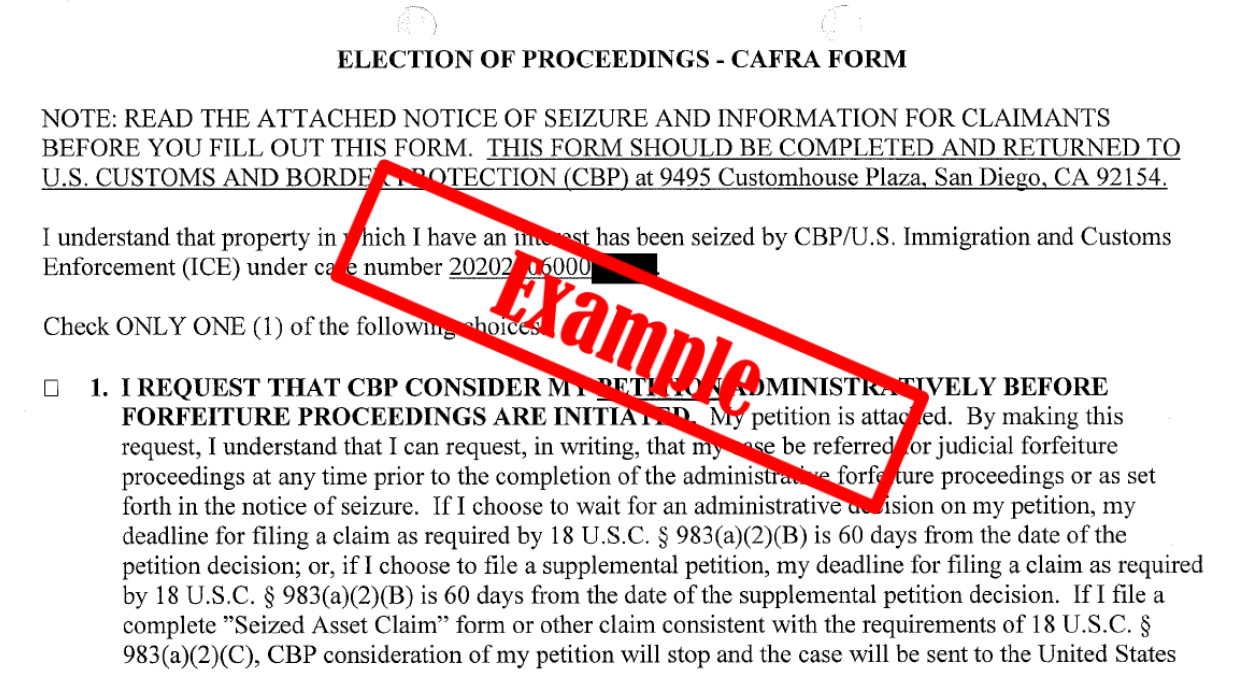Understanding Federal Forfeiture and Seizure: Your Rights and Options
In today’s challenging legal landscape, individuals often find themselves facing asset forfeiture under circumstances that may seem unjust.
It’s essential to recognize how U.S. Customs and Border Protection (CBP), along with other agencies like the DEA, FBI, USPIS, USSS, and HSI, handle cash and assets during forfeiture at border crossings, checkpoints, or other areas, especially when larger sums of money are involved.
Overview of the Seizure Process
U.S. government agency authorities operate under the premise that any funds identified as being related to criminal activities or acquired through criminal means belong to the government.
Consequently, the process begins when you receive a letter titled “NOTICE OF SEIZURE AND INFORMATION TO CLAIMANTS FORM.”
This letter outlines your options, including an “Election of Proceedings.”
You might feel tempted to file a “petition for remission” to explain your situation and hope for the return of your property.
However, it’s vital to understand that these petitions are frequently denied, resulting in the loss of your assets.
You also have the option to submit an Offer in Compromise, which essentially means relinquishing your claim to the property, or pursuing Judicial Proceedings (Court Action).
This forfeiture system can sometimes feel like a means for law enforcement to utilize seized assets to fund their operations.
Each case is unique, and legal guidance is critical when deciding what your best option is.
For instance, we’ve observed situations such as a spouse unknowingly becoming embroiled in her partner’s illegal activities, although they owned property that was seized jointly.
In such cases, the spouse may have a legitimate claim to half of the seized assets, whether it’s cash or property registered in her name, such as a vehicle.
The government refers to this as a “conveyance” since the property is in the spouse’s name as well.
It’s crucial to spread the word, particularly to those affected, such as spouses left in precarious situations with minimal resources.
Time is of the essence—there is a 30-day window following the issuance of the Notice of Seizure to consult with a knowledgeable attorney to pursue your claim, or else risk losing everything to the government.
If you find yourself in this predicament, don’t hesitate to reach out for help.
Consult an experienced asset forfeiture attorney today!
Contact San Diego Defenders – Forfeiture Law Firm for a complimentary, confidential consultation with Attorney Daniel Smith at (619) 258-8888.
Your rights matter, and we’re here to help you navigate the complexities of asset forfeiture.



